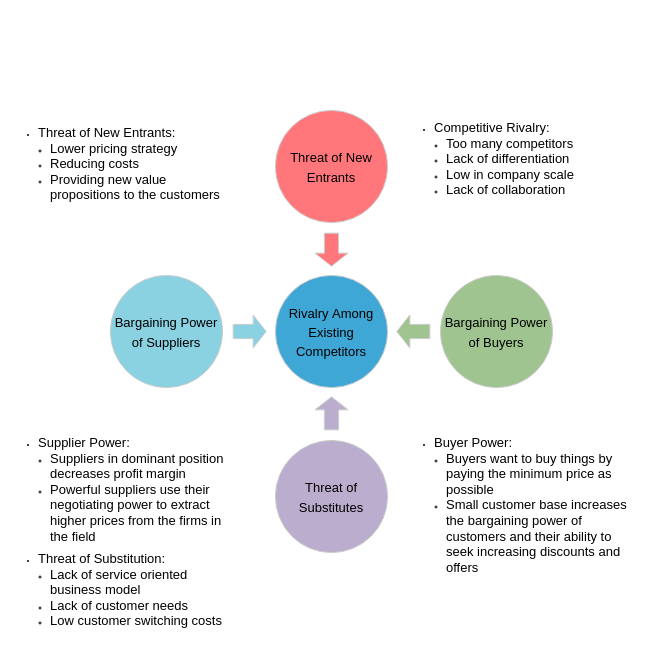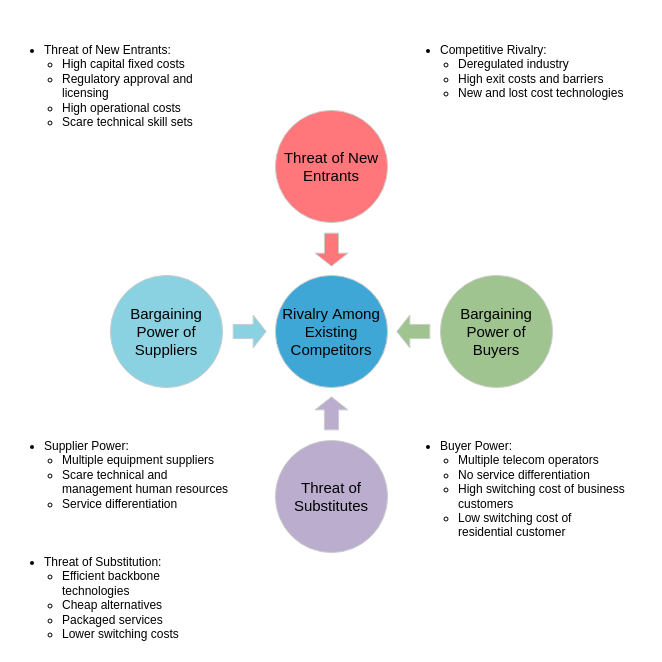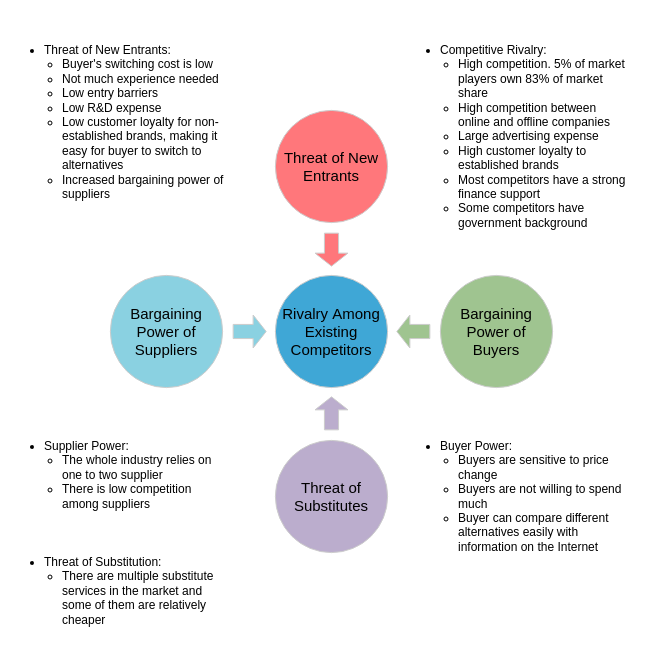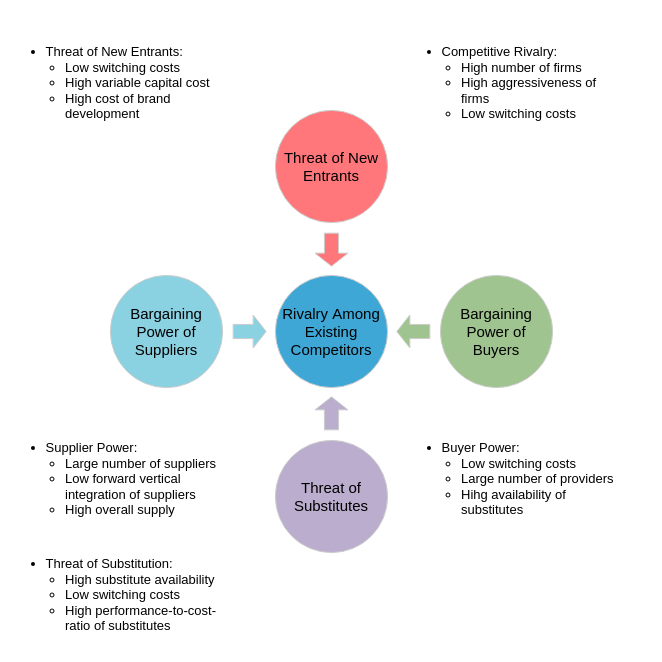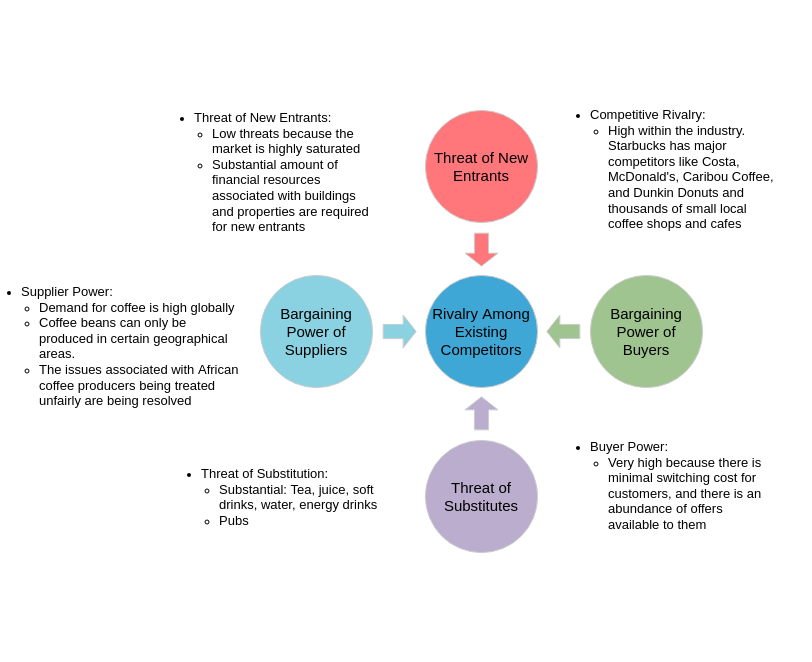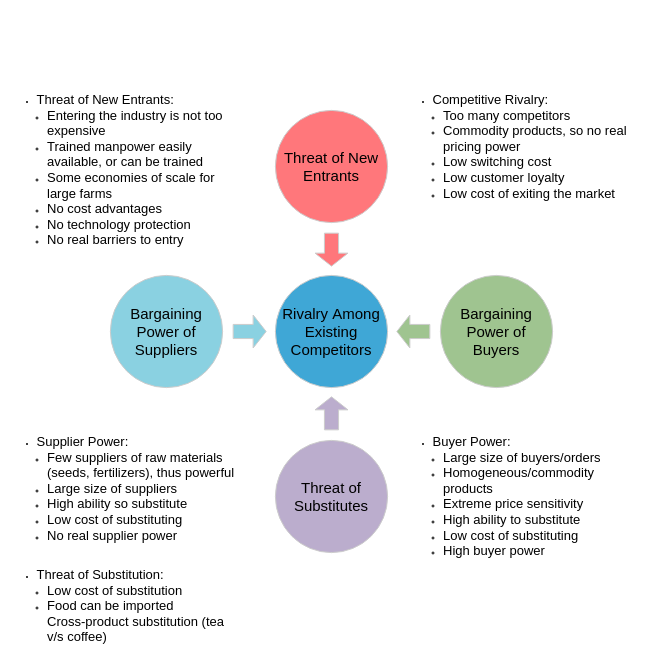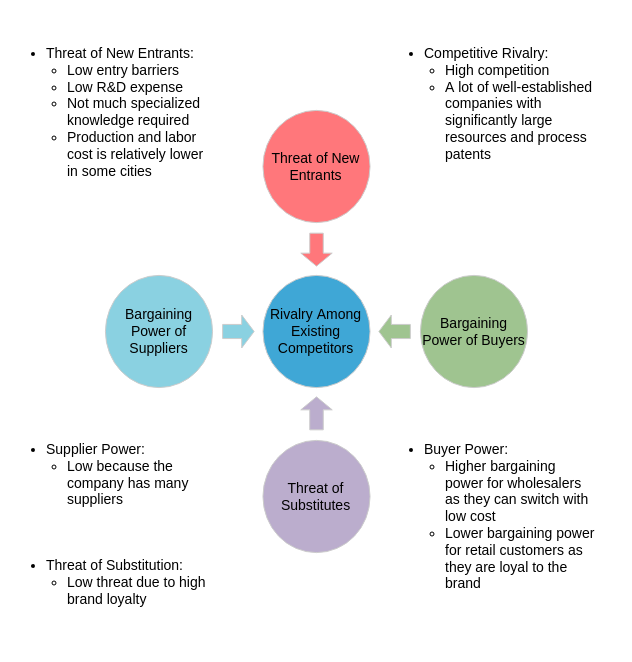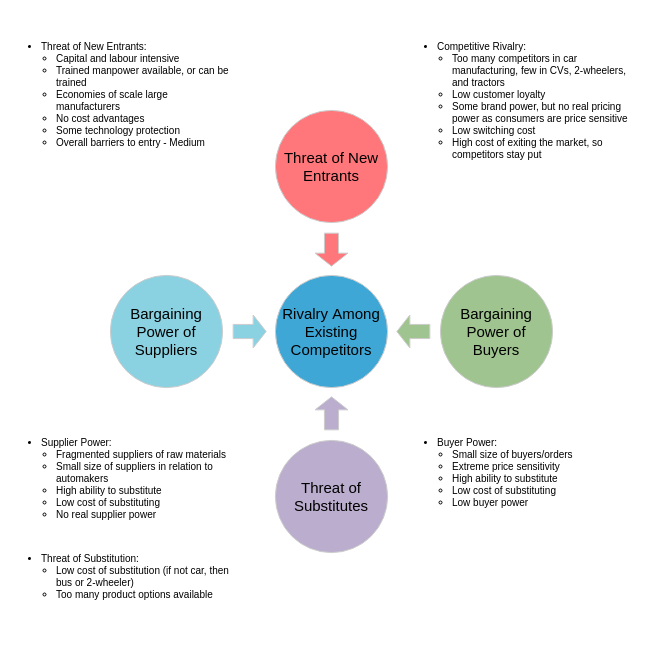In the fast-paced and ever-evolving business world, staying ahead of the competition is crucial for success. One powerful tool that can help companies gain valuable insights into their industry’s competitive landscape is the Five Forces Analysis. Developed by renowned strategist Michael Porter, this framework provides a comprehensive assessment of the forces that shape the level of competition within an industry.
As a beginner’s guide, let’s delve into the five key forces and explore how they can be applied to gain a strategic advantage.
- Threat of New Entrants:
The first force examines the barriers to entry for new competitors. High start-up costs, the need for specialized expertise, and strong brand loyalty among customers can create significant hurdles for new players. By understanding the threat of new entrants, businesses can develop strategies to fortify their market position and deter potential rivals. - Bargaining Power of Suppliers:
The second force focuses on the power wielded by suppliers. If a few dominant suppliers control the market, they can dictate terms and prices, potentially squeezing the profit margins of businesses. Analyzing the supplier landscape can help companies identify ways to diversify their supply chain, negotiate better deals, and reduce their reliance on individual suppliers. - Threat of Substitutes:
The third force considers the availability and appeal of alternative products or services that can meet the same customer needs. Substitutes can lead to price wars and erode market share. Understanding the threat of substitutes allows businesses to differentiate their offerings, enhance customer value, and stay ahead of the competition. - Bargaining Power of Buyers:
The fourth force examines the ability of customers to influence the market. If buyers have a wide range of options, they can exert significant pressure on prices and terms. Analyzing buyer power can help companies tailor their products, pricing, and customer service to meet the evolving needs and preferences of their target market. - Intensity of Competitive Rivalry:
The final force assesses the level of competition within the industry. High rivalry, characterized by factors such as price wars, aggressive marketing campaigns, and the introduction of new products, can significantly impact a company’s profitability and market share. By understanding the competitive dynamics, businesses can develop strategies to differentiate themselves, strengthen customer loyalty, and gain a sustainable competitive advantage.
By applying the Five Forces Analysis, businesses can gain a comprehensive understanding of the forces shaping their industry. This knowledge, in turn, can inform strategic decision-making, resource allocation, and the development of effective competitive strategies.
As a beginner, the key to effectively utilizing the Five Forces Analysis is to start with a thorough examination of your industry. Gather data, consult industry reports, and engage with key stakeholders to gain a deeper understanding of each force. Then, analyze how these forces interact and how they may evolve over time. This holistic approach will equip you with the insights needed to make informed decisions and position your business for long-term success.
Remember, the Five Forces Analysis is not a one-time exercise; it’s an ongoing process. Regularly revisiting and updating your analysis can help you stay ahead of the curve, anticipate industry shifts, and adapt your strategies accordingly.
Mastering the Five Forces Analysis is a valuable skill that can benefit businesses of all sizes and industries. By embracing this strategic framework, you can unlock a deeper understanding of your competitive landscape and position your company for sustained growth and success.
A Case Study of Five Forces Analysis for McDonald’s
As one of the world’s largest fast-food chains, McDonald’s operates in a highly competitive and dynamic industry. Let’s delve into a comprehensive Five Forces Analysis to understand the key factors shaping the company’s strategic landscape.
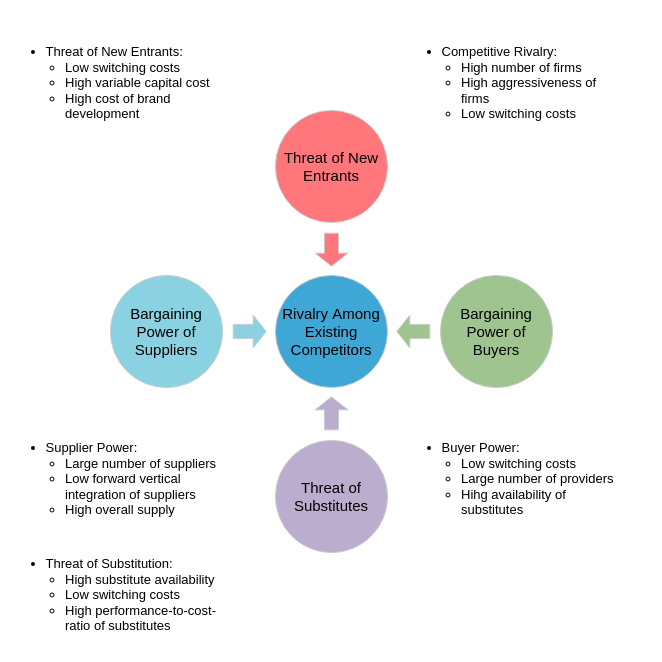
- Threat of New Entrants:
- Low switching costs for customers make it relatively easy for new competitors to enter the market.
- High variable capital costs and the significant investment required for brand development pose barriers to entry.
- McDonald’s strong brand recognition and established infrastructure provide some protection against new entrants.
- Bargaining Power of Suppliers:
- The large number of suppliers for ingredients and logistics services gives McDonald’s considerable bargaining power.
- The low vertical integration of suppliers and their high overall supply capacity further strengthen McDonald’s position.
- McDonald’s can leverage its scale and long-standing relationships to negotiate favorable terms with its suppliers.
- Threat of Substitutes:
- The high availability of substitute options, such as other fast-food chains, casual dining restaurants, and home-cooked meals, poses a significant threat.
- Low switching costs for customers make it easier for them to shift between different dining options.
- McDonald’s must continuously innovate and differentiate its menu offerings to stay competitive against substitutes.
- Bargaining Power of Buyers:
- Customers, both individual and institutional, have a large number of options and low switching costs, giving them significant bargaining power.
- The high availability of substitutes in the fast-food industry further empowers buyers to negotiate better terms and pricing.
- McDonald’s must focus on enhancing customer loyalty, providing value-added services, and tailoring its offerings to meet the evolving preferences of its diverse customer base.
- Rivalry Among Existing Competitors:
- The fast-food industry is highly competitive, with a large number of firms vying for market share.
- Competitors often engage in aggressive tactics, such as price wars and promotional campaigns, to attract customers.
- Low switching costs for customers and the relative ease of replicating menu items and operational practices contribute to the intense rivalry.
- McDonald’s must continuously innovate, improve operational efficiency, and enhance its brand image to differentiate itself from competitors.
In response to these five forces, McDonald’s can implement the following strategic measures:
- Strengthen brand loyalty and customer experience to mitigate the threat of new entrants and substitutes.
- Leverage its scale and supplier relationships to maintain a cost advantage and negotiating power.
- Diversify its menu offerings and innovate continuously to stay ahead of competition.
- Enhance customer engagement and personalization to address the bargaining power of buyers.
- Continuously optimize operations, invest in technology, and focus on operational excellence to enhance its competitive position.
By thoroughly analyzing and addressing these five forces, McDonald’s can develop a comprehensive strategy to navigate the complex and ever-evolving fast-food industry, solidify its market leadership, and drive long-term sustainable growth.
Conclusion:
The comprehensive Five Forces Analysis has provided valuable insights into the competitive landscape shaping McDonald’s strategic decisions. By thoroughly examining each of the five forces – the threat of new entrants, the bargaining power of suppliers, the threat of substitutes, the bargaining power of buyers, and the intensity of rivalry among existing competitors – McDonald’s can develop a well-rounded understanding of the industry dynamics.
This analysis has highlighted both the challenges and opportunities that McDonald’s must navigate to maintain its position as a global leader in the fast-food industry. The company’s strong brand recognition, extensive supplier relationships, and operational efficiency serve as formidable defenses against the threat of new entrants and the bargaining power of suppliers. However, the ubiquity of substitute options and the intense rivalry among competitors require McDonald’s to continuously innovate, enhance customer experience, and differentiate its offerings.
To capitalize on these insights, McDonald’s must adopt a holistic approach that aligns its strategic initiatives with the identified forces. This may involve strengthening brand loyalty, optimizing supplier relationships, diversifying the menu, and improving operational agility. By addressing these critical factors, McDonald’s can position itself to overcome the industry’s challenges, seize emerging opportunities, and solidify its competitive edge.
Ultimately, the Five Forces Analysis equips McDonald’s with a robust framework to monitor, adapt, and thrive in the dynamic fast-food landscape. By regularly revisiting this analysis and adjusting its strategies accordingly, the company can navigate the complexities of the industry, drive sustainable growth, and solidify its position as a global culinary icon.
